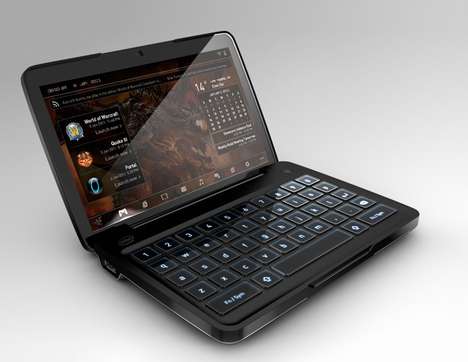Razer’s switchblade remakes the ultra-mobile PC as a game machine


Along those lines, one fascinating CES gem was the Razer Switchblade. The mouse-and-accessory maker was showing off a prototype of a handheld gaming PC, specifically designed to play video games. This caught our eye because it's clearly an attempt to rescue the moribund ultra-mobile PC (also called UMPC) by adding (you guessed it) a new emphasis on gaming.
A couple of years ago, companies such as Sony and OQO made big splashes with tiny handheld PCs, running Windows and low-power Intel CPUs. They were flashy, expensive, and ultimately unsuccessful, as they were too small and underpowered for everyday computing. In short, UMPCs were a solution in search of a problem.
Little has been seen of these kind of systems in some time -- they’ve largely been replaced by netbooks, smart phones, and even more recently, tablets. That’s why the Razer Switchblade is so intriguing. According to Razer, it’s an Intel Atom Windows 7 laptop, with a small 7-inch display. A secondary display under the transparent keyboard allows each game to rewrite the keyboard on the fly with new buttons and commands.
So, why is this interesting to us? It’s because the original ultra-mobile hardware concept fell flat without the proper focus on specific audiences and tasks -- but by re-orienting the concept around gaming, there’s at least a credible argument to be made about the UMPC (a term, by the way Razer would never use to describe its device, even though that’s what it is), other than marketing it as an expensive executive toy.
Of course, this is just a concept piece, and there’s no guarantee any product like this will ever hit store shelves. On top of that, the emphasis right now seems to be on “serious” PC games, and also World of Warcraft, which is social and casual enough to fall under our purview.
The real interesting play would be to make this an inexpensive device and focus on social and casual games, because with the exception of a handful of specialized apps, such as FarmVille for iPad, these are still out of the reach of most tablet/smartphone users.